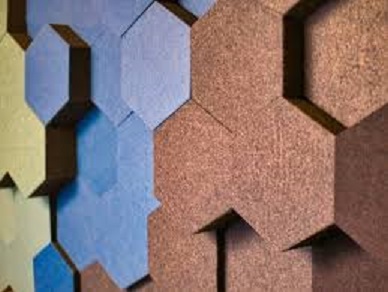How To Soundproof A Bedroom: Sleep Noise-Free!
How to soundproof a bedroom is a painful question. Your bedroom is a refuge for you, a safe haven. When you get home from a long day at work, the first thing you want to do is go straight to your room. You take off your shoes, put on your pajamas, and turn on the TV to watch your favorite show for the evening. When you’re wrapped up in your blankets, the last thing you want to deal with is disturbing noises that keep you from completely resting.
Noise pollution is the worst, yet comprehensive soundproofing is extremely expensive! You may not always be able to limit the sources of noise that surround your bedroom, particularly if it originates from the street or a neighbor’s home. However, with these easy soundproofing measures, you can reduce the problem and reclaim your needed peace.

Why Do You Need To Soundproof Your Bedroom?
The good news is that you can limit the amount of noise that enters and exits your room. With just a few soundproofing materials, you’ll be enjoying the peace and quiet in no time.
If you’re not sure how soundproofing can help you, we can assure you that the list is infinite. Whether you like or dislike your neighbors, you have no control over the noise they make. On sleepless evenings, you may find yourself putting earplugs or earmuffs in your ears due to loud parties or loud music. You’ll have the peace of mind you deserve when you soundproof your bedroom.
Soundproofing your room also allows you to relax on your favorite sounds without having to deal with annoying complaints. You can enjoy all of your noises at your level of comfort, whether you have a passion for loud music or wish to practice your drums in silence.
Related: How to Make a Noise Complaint
So, How To Soundproof A Bedroom?
Soundproofing is not always difficult or expensive, and even the most basic techniques may make a significant impact. Here are the soundproofing techniques you can do for your bedroom.
1. Seal the Door
In a bedroom, doors are one of the most significant sound transmitters, even if it’s a sliding glass door or a french door. The majority of doors are made of thin materials with air gaps; they are effective soundboards. The Solution: Increasing the door’s mass and avoiding air leaks.
The simplest approach to give a thin door more weight or solidity is to replace it. Heavier doors, on the other hand, raise material prices and necessitate a costly replacement. Simply look for a solid strong slab-style door if you have the resources. You should budget between $200 and $300.
If you don’t have the funds for a new door, you may add more mass to the room-side of the door by affixing a layer of Mass Loaded Vinyl (MLV) or acoustical soundboard. To get a similar effect, consider hanging a tapestry or a large blanket.
To avoid door air leaks, begin by doing the following:
- Remove the door trim and use acoustical sealant to seal the frame.
- Weatherstripping should be applied to the top and sides of the door.
- Seal the bottom of the door with a door sweep.
Try standing inside the room with the door shut and the lights turned off to check for air leaks. If light shines through, there is an air leak through which sound can travel.
Video: DIY – Seal You Door
2. Seal the Window
Not every bedroom has a window. However, windows, like doors, are one of the most essential soundproofing priorities. Plus, they suffer from the same issues as your door. On the other hand, you have been exposed to the outside noise, which means there is a lot of extra noise to block out.
Air sealing your windows is similar to air sealing your door: acoustical sealant and weatherstripping. If your door is sealed, you should have both of these items on hand.
The glass panes are the next consideration. Thermal windows with two or triple panes are already fairly soundproof.
Older homes, on the other hand, feature single-pane windows that don’t seal effectively. You may replace the windows in the same way that you replaced the door. However, replacing a whole window may be too expensive. Instead, try using a transparent window insert or making a window plug to use at night. These inserts/plugs function as a buffer between both the window and the insert, creating dead space.
Video: How to seal gaps around a window
3. Seal Wall Leaks
>When it comes to soundproofing walls, the first thing to consider is air leakage. Electrical outlets, air vents, and spaces beneath baseboards are the most common culprits. Basically, every opening that allows air to escape may also allow sound to escape.
The heating, cooling, and circulating air in your bedroom is controlled via HVAC vents. Although permanently closing the vent and sealing it with a magnetic vent cover is not an option, a piece of MLV can be used to soundproof the vent. Socket sealers and soundproof switch covers can be used to seal electrical outlets. Green Glue or another acoustic sealer can also be used.
To seal baseboards, do the following:
- Remove the baseboard from the room.
- Apply acoustic sealant on the drywall and floor.
- Remove the baseboard and reinstall it.
4. Insert Wall Hangings
We mentioned this wonder in our article How to Soundproof a Studio. Sound is reflected and amplified by hard surfaces such as drywall, plaster, and tile. As a result, it’s only natural for soft surfaces to absorb sound, making spaces quieter. Thick blankets, moving pads, tapestries, or quilts can be used to cover the walls. Any soft material will do, however, thicker fabrics will absorb more sound than thinner ones.
Fasten sound-absorbing panels to the walls and, if required, the ceiling if you don’t mind the space taking on an industrial appearance. Soft foam rubber, thick polyester fiber, and cork are among the noise-dampening materials used in the panels.
Video: Cheap Soundproofing Materials 2021 | Sound Deadening Materials
5. Install a Drywall
This method of noise reduction necessitates a substantial time and financial investment, yet it’s among the most effective ways to soundproof a bedroom: Add a 12-inch-thick layer of drywall to the existing walls and ceiling. Secure the new drywall with a dampening compound, a sound-deadening caulk, for added protection against noise transmission.
While regular drywall can be used to cover existing walls and ceilings, special sound-deadening drywall should be used instead. It features a plastic polymer layer attached to the rear surface that reduces noise significantly. The sheets are very simple to install, as they are only 5/16 in. thick (all about drywall on homestratosphere.com).
Video: Drywall Installation Dos & Don’ts
6. Install Soundproof Drapes
Soundproof drapes or noise-reducing curtains are affordable and simple to install. Likewise, they are excellent for sound deadening but not for sound blocking. The curtains, like the door, maybe thought of as MLVs that serve to minimize noise. The less sound there is, the more density there is between the chamber and the window. Instead of utilizing two drapes, you might use four to expand the curtain’s bulk.
A similar impression may be achieved using large tapestries or wall hangings. However, because the material is generally thin, the sound will not be as effectively muffled.
Video: Five-Ply Acoustic Curtain Tested | HOFA-Akustik
7. Install Carpets and Underlayments
As previously stated, soundproofing involves impact noises, which are created when two objects collide. Vibrations reverberate throughout the structure as a result of the collision. Installing wall-to-wall carpet with deep cushioning is the best and easiest approach to reduce noise. Steps are muffled by the carpet, and airborne noise is absorbed. A soundproof underlayment made of MLV glued to closed-cell foam might help to further soundproof your flooring (read more about Mass Loaded Vinyl on soundproofliving.com).
While wall-to-wall carpeting with underlayment is the greatest option, it is also the most costly; if you live in an apartment, it may not be an option at all. At the absolute least, get some area rugs and consider putting a layer of MLV under them.
Video: QuietWalk Flooring Underlayment – Sound Absorption and Moisture Protection Underlayment Benefits
8. Rearrange Your Furniture
Large items of furniture, such as desks, bookcases, wardrobes, chairs/couches, end tables, and so on, are beneficial in bedrooms. These pieces of furniture can be carefully placed to help reduce noise from shared walls. Adding mass or density is a similar concept. You’re providing another surface for sound waves to bounce around on. The harder an object is to vibrate, the larger/heavier it is.
This approach is based on the assumption that you already have furniture that has to be rearranged. If you don’t have any bedroom furniture and want to soundproof it, get some bookshelves and some books. They’re your best bet in terms of density. Remember that you’ll be able to hear the noise even better if you put the bed and bedframe towards the incident wall. So, you should position your bed as far away from the incident wall as possible.
In Conclusion
By following these methods, you will be able to transform your bedroom from a source of noise pollution to a tranquil refuge. Is it completely soundproof? No, but the significant difference will do.
Soundproofing your bedroom doesn’t have to be expensive or difficult, yet it might be the key to a good night’s sleep. If you experience insomnia, live with noisy roommates or housemates or live in a busy area of town, soundproofing your bedroom for a day or two might be time well spent.
You’ll be able to complete this in a weekend without losing your mind or draining your bank account. It’s much simpler to sleep, read, relax, and do whatever you’d like in your bedroom now!



